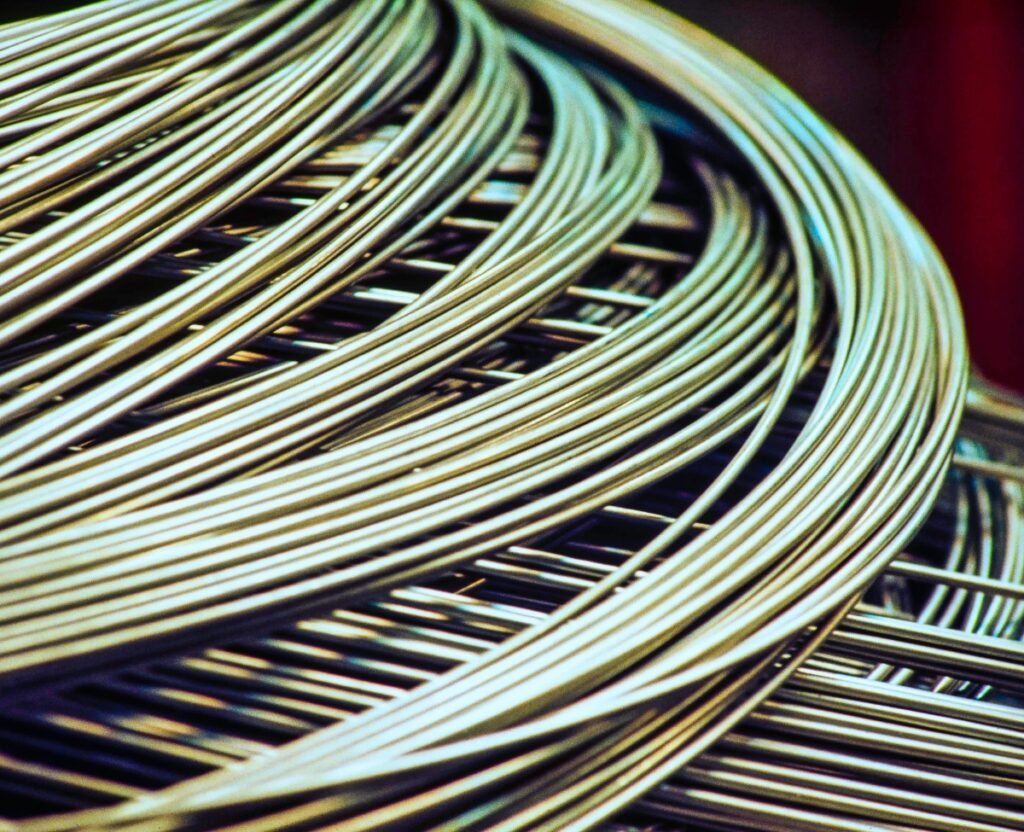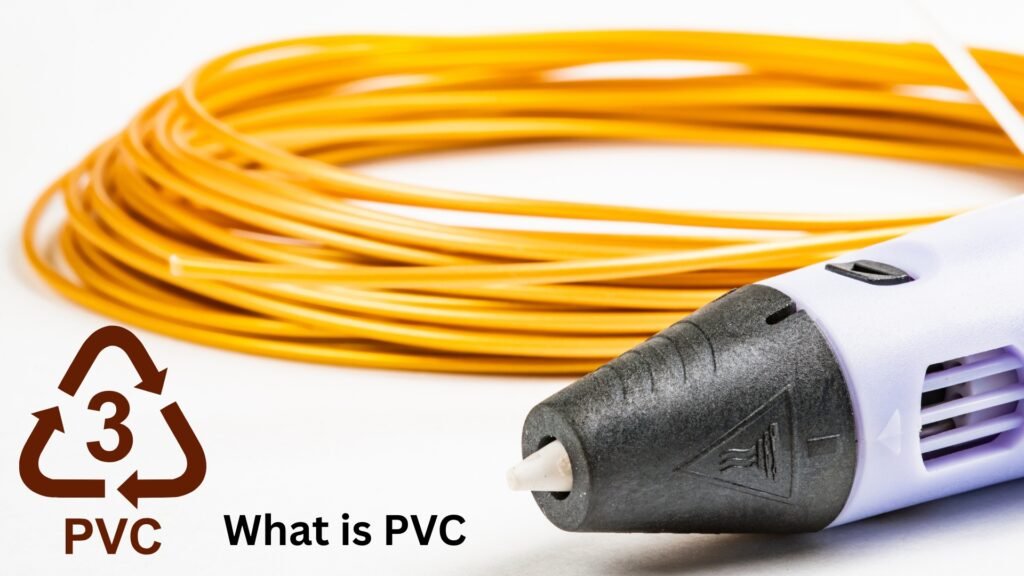Polyvinyl Chloride or PVC is a synthetic polymer of plastic. You see it everywhere. Its extensive application is because it is cheap. It is also extremely multifunctional. PVC is used in construction, electronics, and clothes. This substance plays a great part in everyday life.
This paper will discuss the world of PVC. We will cover its definition. We shall talk of its various types and shall look into its characteristics and numerous applications. You will get to know about its advantages and disadvantages. The implications for the environment of it will also be touched on. Thus, this reference provides a bright perspective on this valuable material.
The Science and History of PVC
PVC is a thermoplastic. This implies that it can melt and re-work without any alteration of its chemical properties. The substance was accidentally found in 1872. Vinyl chloride gas was subjected to sunlight by German chemist Eugen Baumann. Therefore, this was formed into a white solid powder. Thus, that powder was PVC. Early versions were brittle. They were not very useful.
In 1926, B.F. Goodrich scientists discovered how to make it more flexible.
They added plasticizers. Therefore, this development saw PVC being applicable in most commercial products. It became widely used within a short period of time, particularly in World War II, when there was a shortage of rubber. Currently, PVCs are manufactured at an approximate rate of 40 million tons per year. It is produced by a gaseous mixture of chlorine, salt, and ethylene from natural gas or oil.
Types of PVC
PVC comes in two main forms. They both possess different traits. The application of these forms defines it.
Rigid PVC (uPVC)
The uPVC, which means unplasticized, is also referred to as rigid PVC. It is stiff and strong. In this form of PVC, there are no plasticizers. It is denser than flexible PVC and measures approximately 1.3 to 1.45 g/cm 3.
It is the type that is durable. And, it is waterproof, shockproof, and chemical-proof. Rigid PVC is common in the building industry. Common applications are window frames, pipes, doors, and siding. It is applied to bank cards and non-food packaging, as well.
Flexible PVC (PVC-P)
Plasticizers are produced in flexible PVC. These additives result in softening and elasticity of the material. Thus, this is what is referred to as PVC-P. It has a density of between 1.1 and 1.35 g/cm 3. The plasticizers are lubricating agents between the PVC molecules. This gives a much more flexible plastic.
This is the freedom of a new world of applications. It is used in electrical cable insulation, plumbing, flooring, and in inflatable products. It is also in use in medical apparatus such as IV bags and tubing. Flexible PVC is also used in clothing, such as raincoats and boots.

Properties of Polyvinyl Chloride
PVC possesses a special set of properties. These are the characteristics that contribute to its popularity in most industries.
Electrical Insulation
PVC is an electrically non-conducting material. This is why it is a great electrical material. It is popularly applied in insulating wires and cables. This property can be used to increase the safety of homes and industries.
Durability and Strength
PVC is remarkably durable. It is not subject to weathering, chemical corrosion, shock, or abrasion. PVC products can have a long service life. There are PVC pipes that are over 40 years old and still in use. Its tensile strength is high, and this allows it to resist high levels of force before it fractures.
Fire Resistance
PVC is also fire-retardant in nature. It is self-extinguishing in nature due to the high concentration of chlorine. PVC ceases to burn when the source of fire is eliminated. The aspect contributes to the safety of building materials and other products.
Chemical Resistance
PVC is resistant to a large number of chemicals. It is resistant to acids, alkalis, salts, and oils. This is why it is suitable to use in pipes where different types of substances are transported. It is also suitable for industrial containers.
Low Cost
PVC has a good performance to cost ratio. Compared to most other materials, such as copper or wood, it is cheaper to make. It is a low-cost option that can be used in an innumerable number of projects due to its availability and affordability.
Common Applications of PVC
PVC has a wide variety of products due to the nature of its versatility. We will take a look at the most widespread applications.
Construction
PVC is used the most in the construction industry. The pipes in municipal and industrial applications consume about half of the total amount of PVC produced. It is also applied in vinyl siding, window frames, roofing membranes, and flooring. It is a favorite building material due to its ability to resist wear and tear, as well as due to its low maintenance.
Wiring and Cables
PVC has a high insulation effectiveness, thus it is the best material for the sheathing of electrical cables. The material ensures that the wires contained are not damaged. It also helps to avoid electricity shocks. It is also fire-resistant, which is a safety measure.
Healthcare
PVC is a savior of the medical world. It is employed in producing blood bags, IV catheters, and oxygen masks. The substance is biocompatible. It can be easily sterilized. It is an important source of flexibility to many single-use medical devices.
Packaging
A large variety of packaging is done in PVC. It is available in blister packs of drugs. It is applied in shrink wrap and cling film on food. PVC is also used to make bottles of different consumer goods. It is a good packaging material because of its transparency and the fact that it is protective.
Household Goods
PVC is found in most shapes around your place of residence. PVC is commonly used in shower curtains, raincoats, garden hoses, and upholstery. Vinyl records are also manufactured using it; these records have recently gained popularity again.
Advantages and Disadvantages of PVC
Like any material, PVC has both advantages and disadvantages. The awareness of them can aid in making a wise decision.
Advantages
- Affordability: It is a cheap material.
- Versatility: It is either rigid or flexible.
- Strength: It is sturdy and does not wear out easily.
- Safety: It is non-conductive and fire-retardant.
- Minimal maintenance: Products do not need much maintenance.
Disadvantages
- Environmental Issue: PVC is non-biodegradable. It has toxic substances such as dioxins and hydrogen chloride that can be emitted when burnt.
- Health and Safety: The PVC manufacturing process and disposal may be a health hazard. Certain phthalates, which are some of the plasticizers employed in flexible PVC, have caused health-related concerns.
- Thermal Stability: PVC is weakly heat sensitive. It is capable of decomposing under high temperatures.
Environmental Impact and Recycling
PVC has a serious environmental effect, which is much debated. The durability of the material also implies that it remains long in the environmental setting. The PVC in land fires is capable of releasing toxic fumes. Recycling of the PVC can be difficult. It is designated as recycling code 3. Rigid and flexible are the two major types that need to be separated to recycle successfully. The process may also be complicated by the presence of different additives. Mechanical recycling is in when the material is ground to be remelted and reformed. Feedstock recycling is also another technique that disintegrates the polymer into its chemical elements.
PVC recycling efforts are being done to increase industry levels. In Europe, initiatives such as VinylPlus are designed to boost the level of PVC that is recycled every year. These attempts are aimed at developing a more circular economy of this precious material.
The Future of a Misconstrued Material.
Polyvinyl Chloride is not only white pipe. It is a complicated substance that is interlacing the fabric of contemporary reality. The fact that it started as an accidental discovery before becoming a staple in the world is a testimony to its incredible usefulness. Although it has unquestionable cost, durability, and safety advantages, one cannot disregard its impact on the environment.
The future of PVC lies in the balancing of these things. Innovation is key. The creation of bio-based plasticizers and greener production processes is already being done. Recycling technologies and strong collection programs are key to reducing its environmental effects. PVC is either good or bad; it is a material of contrasts. It has a history of human ingenuity against the sustainability challenge. In the future, it is not to get rid of PVC but to re-engineer its lifecycle so that the benefits may be utilized in a responsible way that will benefit generations to come.

